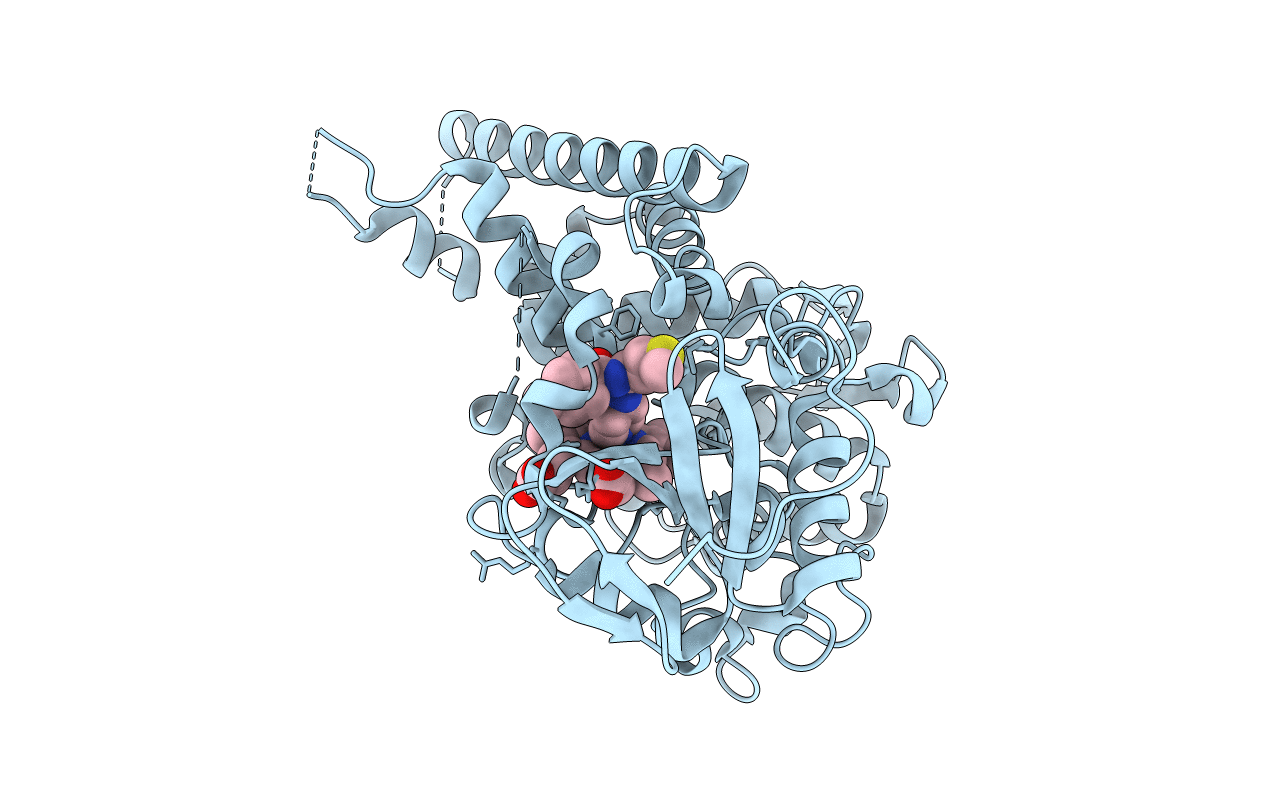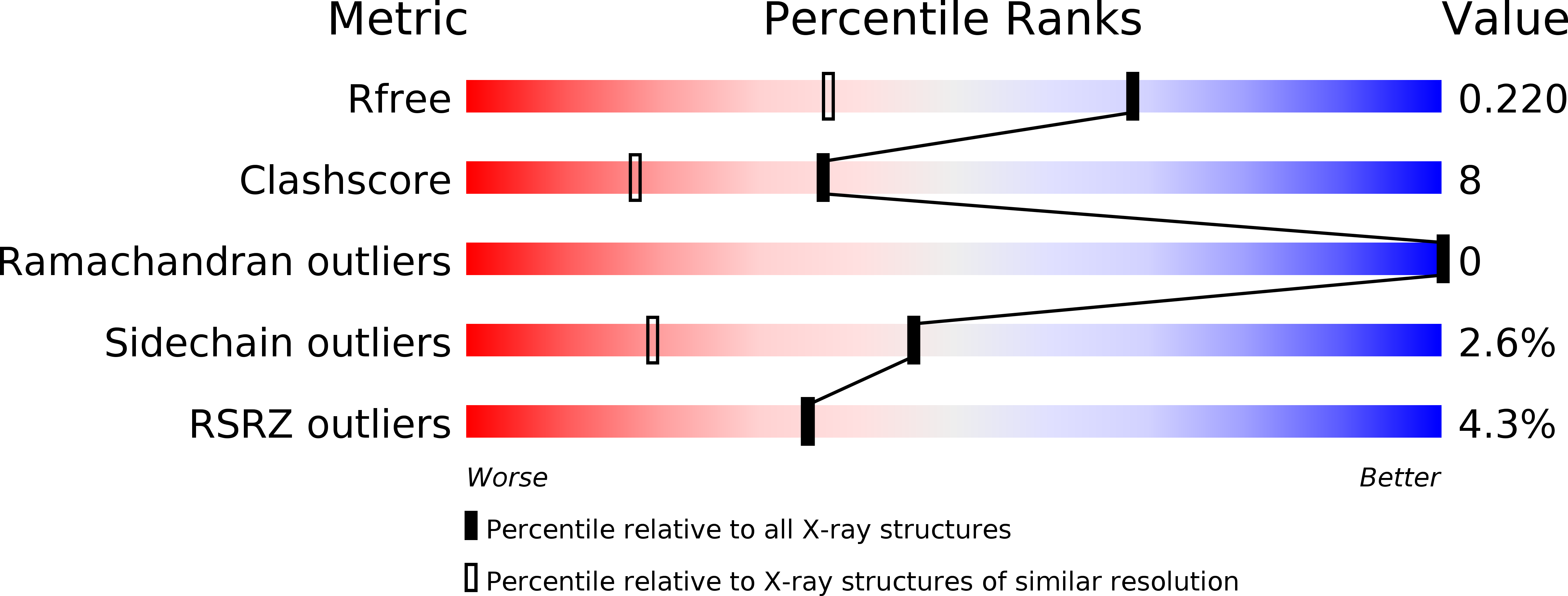
Deposition Date
2008-08-12
Release Date
2009-01-20
Last Version Date
2023-12-13
Entry Detail
PDB ID:
2W09
Keywords:
Title:
CYP51 OF M. TUBERCULOSIS BOUND TO AN INHIBITOR CIS-4-METHYL-N-[(1S)-3-(METHYLSULFANYL)-1-(PYRIDIN-4-YLCARBAMOYL)PROPYL]CYCLOHEXANECARBOXAMIDE
Biological Source:
Source Organism:
MYCOBACTERIUM TUBERCULOSIS (Taxon ID: 83332)
Host Organism:
Method Details:
Experimental Method:
Resolution:
1.57 Å
R-Value Free:
0.22
R-Value Work:
0.18
R-Value Observed:
0.19
Space Group:
P 21 21 21


